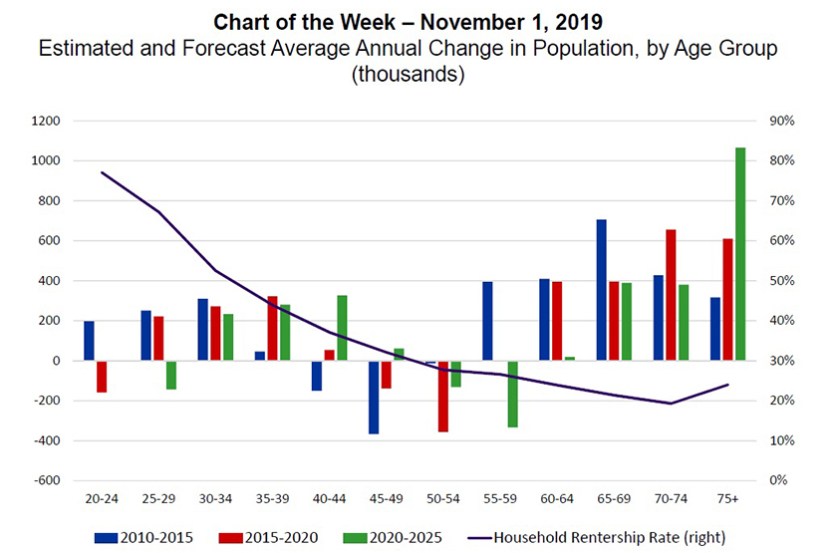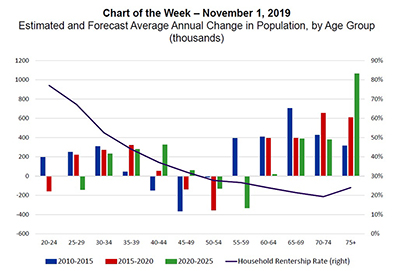
MBA Chart of the Week: Changes in Population By Age Group


Demographics is destiny, or so they say, but often we don’t notice that until after the fact.
Housing demand in the U.S. is expected to grow considerably over the next decade, as the large Baby Boomer cohort grows into age groups formerly held by the Silent Generation, and Millennials mature into age ranges formerly populated by the smaller Generation X. In each of the past two years, these trends have helped add a net 1.6 million households.
As these groups move through different stages of their life cycles, they will affect not only the aggregate demand for housing, but also the composition of that demand. Between 2010 and 2015, the growth brought by Millennials has increased the number of people ages 25-to-34–who, when heading households, tend to be more likely to rent than own–by 560,000. In coming years, that shifts to greater growth among those ages 35-to-45, ages at which homeownership begins to become more prominent.
Growth among older Americans is forecast to continue to be strong and drive the bulk of overall increases–with the greatest increase edging from those ages 65-to-69, to those 70-to-74. Homeownership levels are strong among older groups, but even the relatively small renter share of the overall growth among older populations can mean significant demand for the apartment market.
(Jamie Woodwell is vice president of commercial/multifamily research and economics with the Mortgage Bankers Association. He can be reached at jwoodwell@mba.org.)
